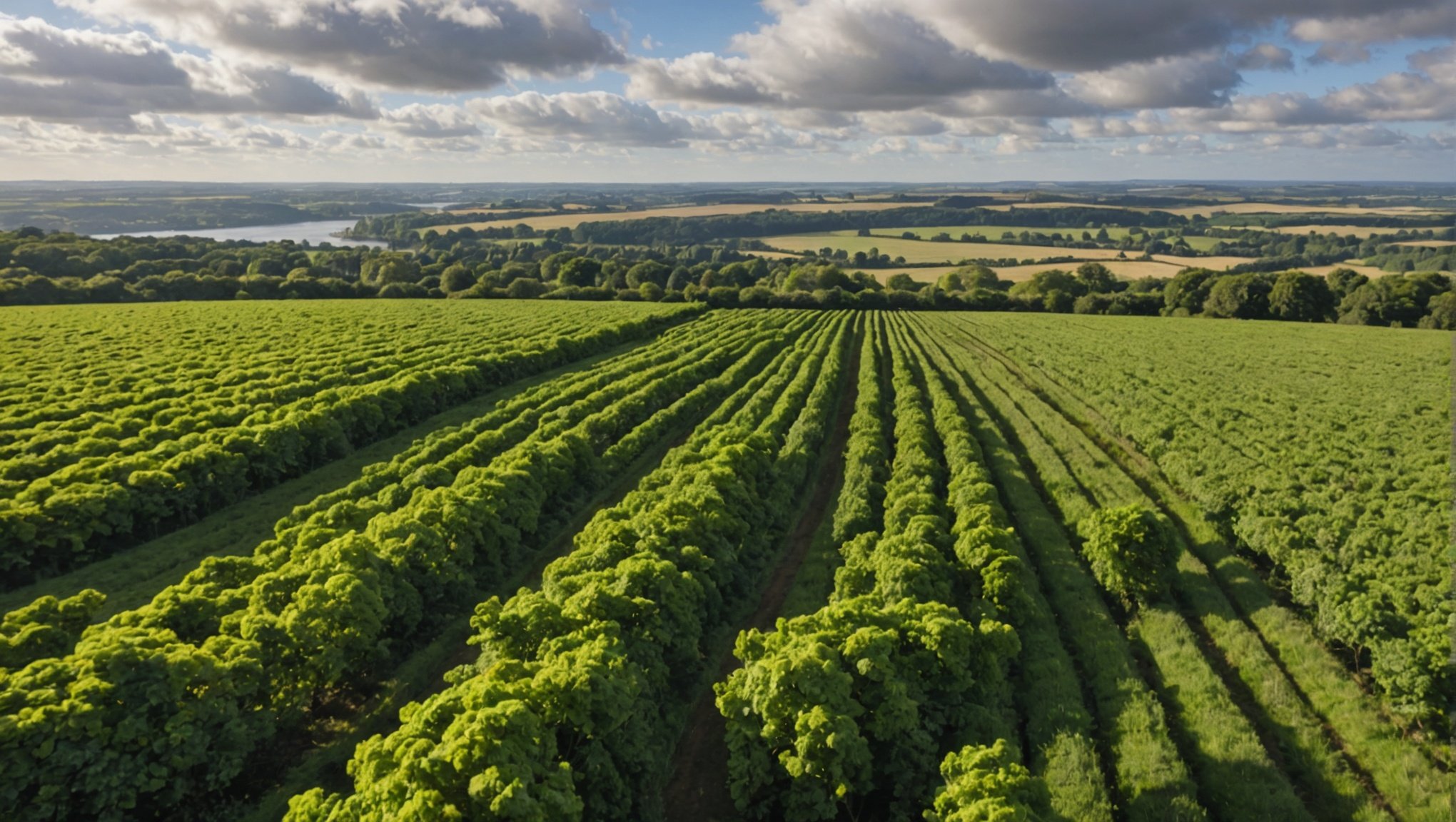In an era marked by unprecedented climate change and significant environmental challenges, the UK is leveraging artificial intelligence (AI) in novel ways to help address pressing environmental conservation issues. From energy efficiency to wildlife conservation, AI technologies are making impactful strides. This article delves into the latest AI innovations that are shaping the future of environmental conservation in the UK.
AI in Climate Change Mitigation
In tackling climate change, understanding and predicting global shifts in environmental conditions is crucial. AI plays a significant role in this domain by analyzing vast amounts of data to offer real-time insights and predictive models.
Have you seen this : What Are the Best Practices for Machine Learning Model Deployment in UK Enterprises?
Climate Modeling and Early Warning Systems
One of the cutting-edge applications of AI is in climate modeling. Advanced machine learning algorithms are used to parse through historical data and simulate future climate conditions. These models can predict sea ice melt, rising sea levels, and carbon emissions with high accuracy. Consequently, they offer invaluable early warning systems for communities likely to be affected by these changes.
Real-time Data Collection
AI-driven sensors and IoT devices have revolutionized the way environmental data is collected. These devices gather real-time information on temperature, humidity, and other environmental factors. AI algorithms then analyze this data to provide actionable insights. For instance, the Turing Institute has developed AI tools that predict and measure carbon emissions from various sources, aiding policymakers in making informed decisions.
Topic to read : How Can AI Improve Customer Experience in UK Telecom Services?
Decision Making and Policy Formulation
The intelligence provided by AI is invaluable for decision-makers. By offering comprehensive data analytics, AI allows for fact-based decision making in environmental policies. For example, AI can identify the most effective areas for tree planting to maximize carbon sequestration. This precision ensures that resources are utilized efficiently, thereby maximizing the environmental impact.
Enhancing Energy Efficiency Through AI
Energy consumption is one of the main contributors to carbon emissions. AI technologies are making it easier to manage and conserve energy, thereby reducing the carbon footprint.
Intelligent Energy Management Systems
Modern energy management systems use AI to optimize energy usage in buildings and industries. These systems analyze energy consumption patterns and suggest ways to reduce energy use without compromising on performance. For example, smart thermostats and lighting systems use AI to adapt to the habits of the users, thereby ensuring energy efficiency.
Renewable Energy Optimization
AI is also pivotal in optimizing renewable energy sources such as wind and solar power. By predicting weather conditions, AI can adjust the operations of these energy sources to ensure maximum efficiency. This not only makes renewable energy more reliable but also more cost-effective.
Network Rail and Turing Institute’s Collaboration
The collaboration between Network Rail and the Turing Institute serves as a noteworthy example. They are using AI to optimize the energy efficiency of the UK’s railway system. AI algorithms analyze train schedules, track conditions, and energy consumption to suggest operational improvements. This has resulted in significant energy savings and reduced carbon emissions.
AI for Wildlife Conservation
Wildlife conservation is another critical area where AI is making a substantial difference. From monitoring endangered species to combating illegal poaching, AI technologies are offering innovative solutions.
Camera Traps and Image Recognition
AI-powered camera traps are being deployed in various wildlife reserves. These cameras capture images of animals, and machine learning algorithms analyze the images to identify different species. This helps in monitoring animal populations and detecting the presence of endangered species. The Turing Institute has been at the forefront of developing these cutting-edge technologies, making wildlife conservation efforts more effective.
Combatting Poaching
Illegal poaching remains a significant threat to wildlife. AI is being used to analyze patterns and predict poaching activities. Machine learning models can analyze data from various sources, including social media, to identify potential poaching threats. This enables authorities to take real-time action, thereby protecting endangered species.
Habitat Restoration
AI is also helping in habitat restoration efforts. By analyzing environmental and ecological data, AI can suggest the best areas for habitat restoration. It can also predict the impact of various restoration activities, ensuring that efforts are directed where they are most needed.
Emerging Technologies in Water Conservation
Water conservation is another critical area where AI is making strides. From monitoring water quality to optimizing water usage, AI technologies are offering innovative solutions to sustainable water management.
Smart Water Management Systems
AI-powered smart water management systems are being deployed across the UK. These systems use sensors to monitor water quality parameters such as pH, temperature, and contamination levels. Machine learning algorithms analyze this data in real time, providing actionable insights for water management authorities. This ensures the availability of clean water and helps in maintaining sustainable water resources.
Predictive Analytics for Water Usage
AI is also being used to optimize water usage in agriculture and industry. Predictive analytics models analyze historical water usage data to predict future needs. This allows for sustainable water management, reducing wastage and ensuring that water resources are used efficiently.
Early Warning Systems for Flooding
Flooding is a significant environmental challenge in the UK. AI-based early warning systems analyze weather data, river levels, and other factors to predict flooding events. These systems provide real-time alerts, allowing communities to take preventive action. This not only reduces the impact of flooding but also helps in conservation efforts.
Challenges and Future Directions
While AI offers numerous benefits, it is not without its challenges. Ensuring data privacy, dealing with biased algorithms, and maintaining the sustainability of AI systems are some of the hurdles that need to be addressed.
Data Privacy and Security
The collection and analysis of data are central to AI’s effectiveness. However, this raises concerns about data privacy and security. Ensuring that environmental data is collected and used ethically is crucial. Robust data protection measures need to be put in place to safeguard sensitive information.
Bias in AI Models
AI models are only as good as the data they are trained on. Biased or incomplete data can lead to inaccurate predictions and decisions. It is essential to use diverse and representative datasets to train AI models. This ensures that the insights provided by AI are accurate and reliable.
Sustainability of AI Systems
AI systems themselves consume a significant amount of energy. Ensuring that these systems are energy efficient is crucial for their long-term sustainability. Research is ongoing to develop energy-efficient AI models that minimize their environmental impact.
The Role of the Turing Institute
The Turing Institute, named after the famous mathematician Alan Turing, is at the forefront of AI research in the UK. The institute is working on developing sustainable AI technologies that can be used for environmental conservation. Their research is paving the way for innovative solutions that address the environmental challenges of our time.
AI is transforming the landscape of environmental conservation in the UK. From combating climate change and enhancing energy efficiency to wildlife conservation and water management, AI offers a plethora of innovative solutions. These technologies not only provide real-time insights but also enable proactive decision making. However, challenges such as data privacy, biased algorithms, and the sustainability of AI systems need to be addressed to fully realize the potential of AI in environmental conservation. As we look to the future, it is clear that AI will play an integral role in shaping a sustainable and environmentally-friendly world.











